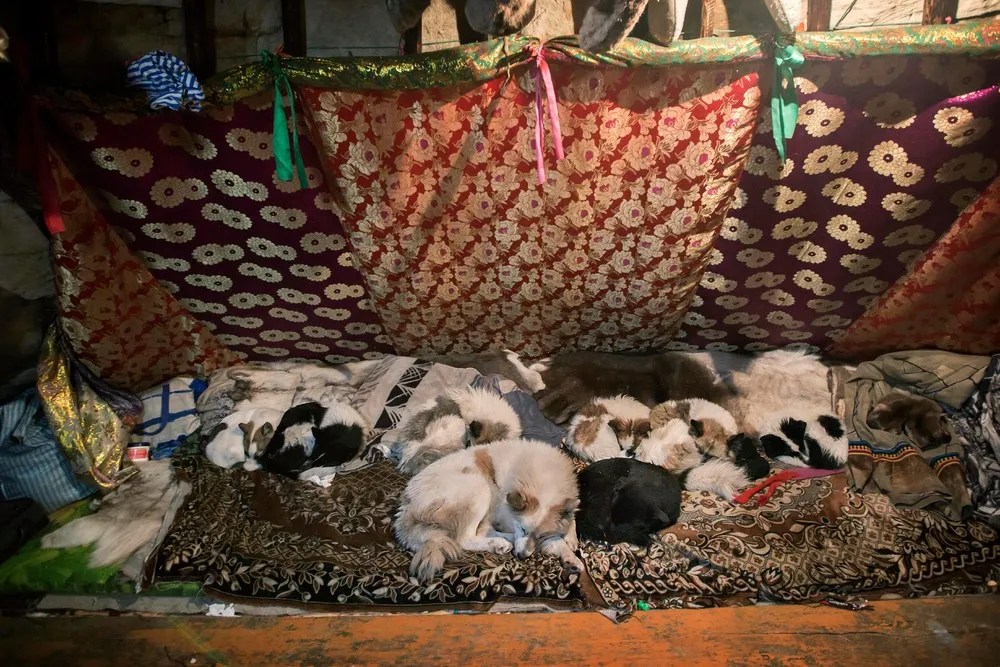|
A British photographer has captured life at the “edge of the world”. Timothy Allen, best known for his work on BBC's Human Planet, trekked through the freezing Siberian wilderness for 16 days as he joined part of an 800km migration of reindeer in the Yamal-Nenets region – a name that roughly translates to “edge of the world”. The stunning pictures feature the nomadic Nenets tribe, who drink blood to survive in -45°C temperatures. Timothy's epic journey, which will be revealed in an eight-minute documentary on Animal Planet USA, saw him travel across the bleak terrain of the frozen Ob River with the Nenets people in December last year. Timothy said: “In all honesty, I’m a 44-year-old bloke, but stuff like this still scares me. If something goes wrong out there, you could be dead in 10 minutes. Siberia is not a pleasant place to be in the middle of winter. I think this is possibly the most inhospitable place I’ve been to. We picked the coldest, darkest, harshest time of the year to go there and I think we paid the price”. The Nenets migrate more than 1,000 miles on hand-made, wooden sledges every year; they live in reindeer-hide tepees, dress in reindeer fur clothes and eat raw reindeer meat – and Timothy had to make sure he followed these distinctive practices extremely closely just to survive. Leading a nomadic existence on the Arctic tundra for thousands of years, there are still 10,000 members of the Nenets tribe who command a reindeer flock of approximately 300,000. Timothy said: “This is a tribe of herders and hunters and this is at their core, this is their soul. I’m fascinated by cultures that still exhibit their traditional values. There are some fundamental things, which they cannot let go of and they’re all connected to the reindeer. If you want water, you dig a three-foot hole in some ice. If you want to go to the loo, you have to walk out into the cold and risk life and limb. If you stick to the Nenet way, you’re absolutely fine. But you are constantly living on a knife-edge. There’s just so little daylight. The sun must only appear for a few hours each day and then you’re in darkness again. You can prepare yourself physically for an experience like this. But I’ve yet to work out how you prepare yourself emotionally. That was the hardest thing, knowing I couldn’t just pack up my stuff and leave whenever I wanted. But it was worth going. I know there are people that live this life and I’ve got a huge amount of respect for them. This is the absolute definition of a different culture”. Here: Some of the travelling animals take a break and sleep in Siberia, December 2016. (Photo by Timothy Allen/Barcroft Productions)
|

